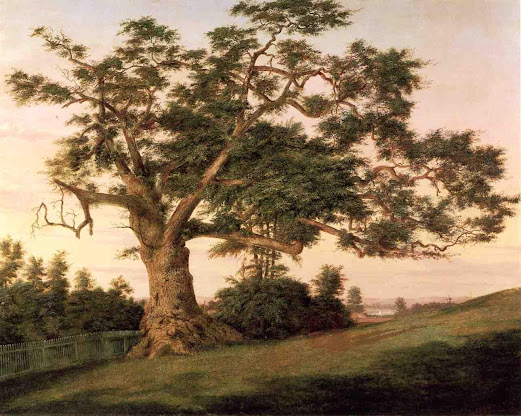On Friday, October 1, I’ll be 65 years old, officially a senior citizen.
I love fall in general and my birth month in particular because I love what God does to the leaves this time of year when the colder weather freezes out the summer weeds that torture me. Our big maple in the backyard sheds enough beautiful leaves to give a whole neighborhood of kids something into which they can jump.
The only thing I’m not thrilled about this time of year is Halloween, which is a perversion of a day (All Saints Day) which was originally assigned to remember those who were martyred for their faith in Jesus Christ. While some churches still remember the original meaning, the demonic holiday Halloween has been so commercialized that even before my birthday, the stores begin to stock up on skulls, witches, and other occult symbols.
And, there’s another holiday celebrated October 31 through November 2, lesser known in the U.S., though it may be gaining traction soon. That is the Day of the Dead, celebrated throughout Latin America, but especially in Mexico. It is no less occultic. Both holidays are defended as being “harmless fun,” but they are both based on the concept of dead people (ghosts) who must be pacified in some way, so the traditional items for the Day of the Dead include a lot of skulls, decorated “beautifully” in honor of one’s deceased ancestors. There are skull masks and costumes everywhere, though why folks would want to dress up like a skeleton has always been beyond me, other than that it must be a satanic obsession.
Eric bought me a couple of items early for my birthday, since we were in town on Sunday. Down at the end of an aisle, I found a tee-shirt I loved, though I suspected it was really a Day of the Dead item. The front reads: “My ancestors are always cheering me on.” Yes, Eric did buy me the shirt.
Me, almost 65
This I know – it is a Biblical concept! If you are a reader of my blog, you know I’ve been talking about it: some portion of my ancestors are part of that great cloud of witnesses, who are rooting for me as I run this earthly race, maybe standing or seated on the sidelines watching me huff and puff towards the finish line. I would suppose most of us have these ancestors who are interested in our spiritual life, but they may be far back in the tree. The white European settlers in the New World (God bless them!) who married my Native American ancestors brought Christianity with them. (My part of this narrative is coming up soon!)
With that in mind, we can continue the tale of Eric’s family tree as he relates it. Some of the people in this post are those who are cheering and clapping when members of our family are overcomers.
**************
TIMOTHY WOODBRIDGE SR.
Timothy Woodbridge Sr. appears to be the connecting point for several other notable ancestors. He was the father of Ruth Woodbridge, who was the wife of John Pierson, the son of Abraham Pierson Jr., and also was the grandson of Gov. Thomas Dudley, the second and recurring governor of the Massachusetts Bay Colony. Timothy Woodbridge was the husband of Mehitable Wyllis, the daughter of Samuel Wyllys (an inquisitor in the Salem Witch Trial prosecution) and granddaughter of George Wyllys, early governor of the Connecticut Colony. Mehitable Wyllis was also the granddaughter of John Haynes, another Colonial American governor.
Rev. Timothy Woodbridge was the son of Rev. John VI and Mercy (Dudley) Woodbridge, (daughter of Thomas Dudley, Governor of Massachusetts). He was born on January 3, 1655/56 at Barford St. Martin, Wiltshire, England.
His father had sailed from England to Andover, Massachusetts, where he met and married Mercy Dudley, and after the birth of their first two children, the family went back to England, where Timothy and some of his siblings were born.
Timothy was the owner of slaves, both African and Native American, as were many of the wealthier families of the colonies, yet in his senior years, he taught school for African Americans and Native Americans. He, along with Abraham Pierson Jr., were two of the original Trustees of what would become Yale University.
JOHN WOODBRIDGE VI
Rev. John Woodbridge was born at Stanton near Highworth in 1613 and was the sixth John Woodbridge to be a minister, with the first being a follower of John Wycliffe. Being a non-conformist to the dictates of the Church of England, he immigrated to America in 1634, purchasing land at Newbury, of the Massachusetts Bay Colony. He married Mercy Dudley in 1639 and was the father of Timothy Woodbridge.
John Woodbridge VI
GEORGE WYLLYS
George Wyllys was born in 1590 in the manor of Fenny Compton, Warwickshire, England. It is believed that he became a Puritan in his university years. He immigrated to the Massachusetts Bay Colony in the early 1630 and held several positions within the governing body, including Deputy Governor and Governor.
On November 2, 1609, he married Bridget Young at Holy Trinity Church in Stratford-on-Avon. The couple had three children before she died in 1629. In 1631 he married Mrs. Mary Brisbey, widow of Alexander Bisbey and daughter of Francis and Alice (Ferneley) Smith, and they had one son.
His family in England was wealthy and longstanding, and his estate in the Colony was impressive and included slaves. But on this estate was also a large oak tree that comes into the story of his son, Samuel Wyllys.
SAMUEL WYLLYS
The descendants of George Wyllys had a long history of serving Hartford. His son Samuel came to Hartford with his father in 1638. In 1654, when only 22 years of age, he was made a magistrate, a position which he held for many years. He was a prominent man in the colony. In 1659, Mr. Wyllys was appointed by the General Court to go to Saybrook and assist Major Mason in examining the suspicions there about witchery. He married Ruth, the daughter of Governor Haynes, and died at about 77 years old, in 1709.
The most widely known event in the life of Samuel Wyllys is one that occurred on his inherited property. From entries in Our Family Tree.org:
“Anyone travelling along the north side of the Wyllys property, would have passed a huge oak tree. When the Wyllys house was built in 1636, the Indians were said to have pleaded with George Wyllys not to cut down the tree, saying that when its leaves were the size of a mouse's ear, they knew it was time to plant their crops.
“Tradition also has it that when Joseph Wadsworth took action to prevent the surrender of the Charter to Sir Edmund Andros in early November 1687, he took it to the Wyllys home. Samuel was away on business in the West Indies at the time, in Antigua, where he had several sugar plantations. There was no safe place in the house to hide the Charter, so Samuel's wife, the story goes, directed him to hide it in a small cavity in the giant oak. She then put the watchdog and his house in front of that cavity. The tree has come to be known as the ‘Charter Oak.’ ”
The image of that old oak tree is on the Connecticut commemorative quarter. I have proudly told many people that the tree on that quarter was literally our family tree.
By Charles De Wolf Brownell - The Athenaeum: Home - info - pic, Public Domain, https://commons.wikimedia.org/w/index.php?curid=10157300
JOHN HAYNES
John Haynes born in 1594 in Essex, England. In his book Remarkable Providences, Increase Mather considered it a miracle that John Haynes died in his sleep in his senior years without being sick. That was apparently unheard of. I remember reading that and thinking at the time how remarkable indeed that would be, until I learned that he died in 1654 at the age of 60. John’s father died when he was eleven and he spent his college years in towns that were popular with Puritans. In about 1630 he was invited by John Winthrop to join them in America where he and others had established the Massachusetts Bay Colony. John eventually became Governor of the Colony and then later a recurring Governor of the Connecticut Colony. John married Mabel Harlakenden in 1636 and they had 5 children, one of them was Ruth, who married Samuel Wyllys.
John Haynes
Mabel Harlakenden
THOMAS DUDLEY
There is so much to be written on Thomas Dudley that it would be better if you just looked him up yourself, but here are the basics. He was born in 1576 at Yardley, Hastings, Northants, England, the son of Roger Dudley and Susanna Thorne. He was from a long and famous line of Dudley’s descended from the early kings of England. He married Dorothy Yorke in 1603 and had many children (by two wives). Among those born to Dorothy were Mercy Dudley (who married John Woodbridge,) Ann Dudley (Bradstreet) an early American poet, and Samuel Dudley (who married the daughter of John Winthrop.) Thomas was the second and recurring Governor of the Massachusetts Bay Colony, arriving with John Winthrop on the Arbella. He was also one of the signers of the charter establishing the school known as Harvard University. Thomas died in 1653.
***********
My favorite story in this chunk of Eric’s history is the part about Samuel Wyllys’s wife Ruth, and the Charter Oak. It is fitting that Eric should be proud of his heritage, and his “family tree.” Ruth isn’t the governor in his lineage or the sixth-generation preacher, but merely the faithful wife, who was home while her husband was away, but who knew she had to do something courageous during a crisis. (If you missed that story because you were skimming, go back now and check it out!)
What will you do when duty calls? Will you capitulate when the going gets tough? Or like Moses’ mother, or Corrie TenBoom, or like Ruth Wyllys ... will you do something brave, and end up on the “right side of history”? I pray that you who read these stories will be inspired to be strong and rely on the Living God for the strength and courage to always do what’s right. The tales may not always be told … but God knows them all. And they will be rewarded.
“He who despises the word will be destroyed, But he who fears the commandment will be rewarded.”
~Proverbs 13:13
" ‘And behold, I am coming quickly, and My reward is with Me, to give to every one according to his work.’ ”
~Jesus, in Revelation 22:12















